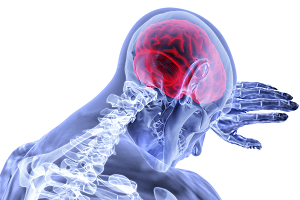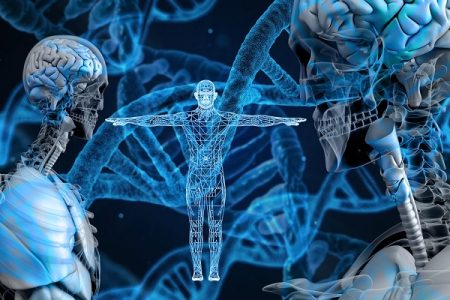Hydrocephalus: Causes, Symptoms, Diagnosis, Treatment
- Updated on: Jul 12, 2024
- 5 min Read
- Published on Apr 1, 2019

What is Hydrocephalus?
Hydrocephalus is the combination of two words – ‘hydro’ meaning ‘water or fluid’, and ‘cephalus’ meaning ‘head’ in Greek. Sometimes, fluid buildup increases in the ventricles or cavities which are situated deep within the brain. This excess fluid leads to an enlargement of the ventricles which puts extensive pressure on the brain causing the condition hydrocephalus. This fluid, made up of water, minerals, nutrients and sugar and known as cerebrospinal fluid, cushions the brain and the spinal cord.
Another term used for hydrocephalus is “water on the brain”. It is a serious condition which, if not treated can cause brain damage, loss of mental and physical abilities and in a few cases even death. According to the National Institute of Neurological Disorders and Stroke, hydrocephalus affects approximately one in every 500 children.
Types of hydrocephalus
These are the main types of hydrocephalus:
Congenital hydrocephalus
Congenital hydrocephalus is present before birth. The main reasons which can lead to congenital hydrocephalus are spina bifida and an infection which develops in the mother during pregnancy, such as mumps or German measles, etc. Children with congenital hydrocephalus are prone to suffer from permanent brain damage.
Acquired hydrocephalus
Acquired hydrocephalus develops after birth due to an injury or severe long term illness which has affected the brain.
Normal pressure hydrocephalus
Normal pressure hydrocephalus is a condition that is usually observed only in older people (above 60) and is quite uncommon. In most of the cases, it develops after an injury.
Other types of hydrocephalus are communicating hydrocephalus, hydrocephalus ex vacuo, arrested hydrocephalus, etc.
It is observed that most of the hydrocephalus cases are diagnosed before birth, or at the time of delivery, or during early childhood.
What Causes Hydrocephalus?
There are three main functions of cerebrospinal fluid in the brain:
- CSF acts as a “shock absorber” for the brain and spinal cord
- CSF delivers nutrients to the brain and also removes waste
- It regulates changes in pressure within the brain as it flows between the cranium and spine.
About 500 mL of CSF per day is continuously produced by the brain. If there’s a blockage in any of the ventricles, CSF does not flow through the spine and skull and backs up in the brain resulting in hydrocephalus. The main causes of hydrocephalus are brain tumors, injuries in the head, complications due to premature birth such as hemorrhage, or diseases such as meningitis or other infections, bleeding within the brain, etc. In very rare cases, this condition can be inherited genetically such as during spina bifida (a congenital defect of the spine) or hernia of the brain (encephalocele).
Also, inflammation of brain tissues may result in poor absorption or failure of absorption of cerebrospinal fluid which can also lead to hydrocephalus. In rare cases, over-production of CSF can also cause this problem.
Signs and symptoms of Hydrocephalus
Some common signs and symptoms of hydrocephalus or ‘water in the brain’ are:
- Frequent headaches or pain in the neck
- Nausea or vomiting
- Drowsiness or sleepiness
- Confusion or lack of co-ordination or balancing problems
- Irritation or discomfort
- Blurred or double vision
- Difficulty in walking
- Lack of bladder control
- Seizures and memory problems
- Loss of sensory-motor functions
- Slow growth and poor appetite
- Eye problems such as Strabismus or Nystagmus
- Deficits in muscle tone and strength
Some specific signs of hydrocephalus in children
- Sunsetting eyes or eyes fixed downward
- Abnormal enlargement of the head
- Prominent veins in the scalp
- Loss of muscle coordination
- Bulging at the soft spots in the head
- Gap felt between skull bones
Some specific signs of hydrocephalus in young adults to older adults
- Change in personality and behavior
- Loss of bladder control or urinary incontinence
- Loss in memory or mild dementia, lack of concentration and cognitive skills
How is hydrocephalus associated with achondroplasia?
Achondroplasia or dwarfism is a bone growth disorder which is caused by mutations in the FGFR3 gene. It affects about one in every 20,000 to 30000 infants. Hydrocephalus is one important sign of achondroplasia in children as children suffering from achondroplasia are observed to have enlarged heads. Enlarged head may be due to subdural haematoma which is related to the wide subarachnoid spaces or any injury. Hydrocephalus in Achondroplasia is often related to obstruction in the blood flow from the brain which results in imparity.
Due to abnormal bone growth during achondroplasia, the skull base remains small whereas the skull vault, brain and cord grow normally. Due to this size-inconsistency, the passage of the foramen magnum thins and the medulla compresses and a hindrance in normal cerebrospinal fluid (CSF) flow is created, which ultimately results in hydrocephalus.
In children with achondroplasia, decrease in the absorption of spinal fluid also leads to enlarged head and hydrocephalus.
How can you prevent hydrocephalus?
To avoid the risk of hydrocephalus, prenatal care is very important. Avoiding any injury (especially head injury) is the best way to keep away from hydrocephalus. Preventing and properly treating infections which can risk hydrocephalus can also be beneficial. Recommended vaccinations should be taken to reduce the risk and as a hydrocephalus prevention strategy.
Diagnosis of hydrocephalus
Hydrocephalus can be detected with the following:
Physical neurological examination for hydrocephalus
Diagnosis of hydrocephalus involves physical-neurological examination. Neurological examination helps to determine the severity of condition. Neurologists ask questions and judge a patient’s condition on the basis of his or her physical behavior.
Imaging tests for hydrocephalus
Ultrasound for children, magnetic resonance imaging (MRI) and computed tomography (CT scan) for adults are recommended imaging tests for hydrocephalus. These tests show any abnormality in the ventricular space and can help in diagnosing the cause of an obstruction in the flow of the cerebrospinal fluid.
CSF Flow Study, Shunt Patency Study and computerized Radionuclide Shunt Study are some other tests which help to monitor circulation of the cerebrospinal fluid. Lumbar puncture, ICP (intracranial pressure) monitoring, isotopic cisternography, etc are also used to measure shunt pressure of the cerebrospinal fluid.
Treatment of hydrocephalus
Treatment of hydrocephalus is given depending upon the age and health of a child. If it is not timely treated, hydrocephalus can lead to severe neurological complications or even, can be fatal.
There are two recommended surgical shunting methods to treat hydrocephalus. A shunt implant can be direct or indirect and has to be monitored regularly. A direct shunt is used to bypass the blockage by creating a hole in the third ventricle. This allows cerebrospinal fluid to flow from the ventricles to the subarachnoid space. An indirect shunt is used to divert the cerebrospinal flow from the brain or spinal cord to other parts of the body such as the abdomen, lung cavity, etc.
Shunt surgery
Inserting a ventricular shunt through surgery is the best way to treat hydrocephalus. A catheter or a shunt or a long tube is inserted to drain out the cerebrospinal fluid from the ventricles to another space such as the abdominal cavity, chamber in the heart, or a space around the lungs. This extra fluid is then absorbed in the bloodstream. The risk of infection is high after shunt surgery.
Endoscopic third ventriculostomy (ETV)
Endoscopic third ventriculostomy is a more effective procedure to treat hydrocephalus. During this procedure, a neurosurgeon uses an endoscope to craft a very small hole in the floor of the third ventricle which constructs a path for fluid to escape from the brain and also bypass any blockages that are causing a build-up of the fluid. ETV is not recommended for infants.
These methods are often associated with complications, therefore, regular checkups and follow-ups after the surgery for hydrocephalus are important.










